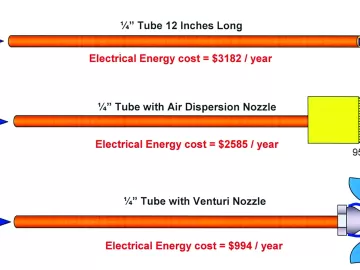Analysis of Current Air Compressors and Dryers in a System Assessment
A complete compressed air system assessment should provide detailed information on both the supply and demand sides of the system. The supply-side refers to the equipment supplying compressed air – the air compressor, dryers, filters, piping and storage tanks. The purpose of this article is to illustrate what information we believe a factory should receive from a supply-side system assessment and more importantly – what information a plant should always know about their compressed air system.












